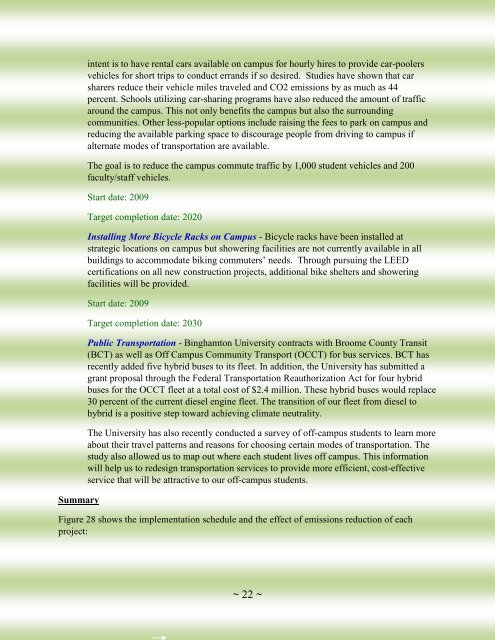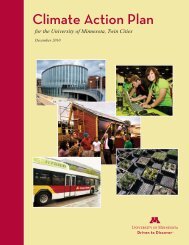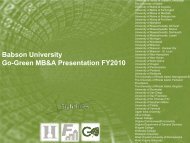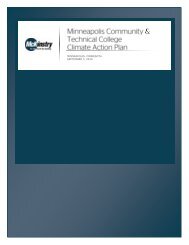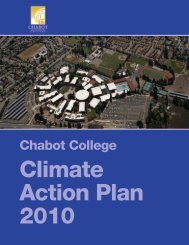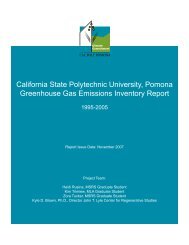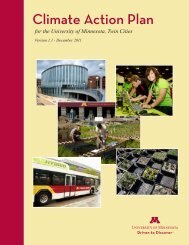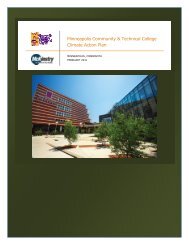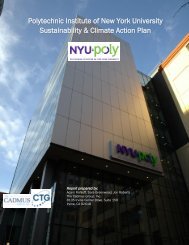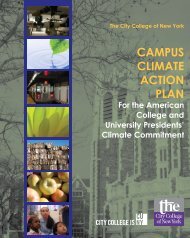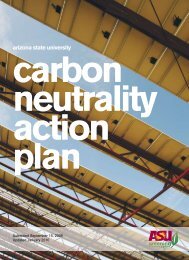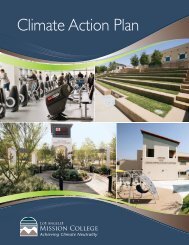Climate Action Plan - Binghamton University
Climate Action Plan - Binghamton University
Climate Action Plan - Binghamton University
You also want an ePaper? Increase the reach of your titles
YUMPU automatically turns print PDFs into web optimized ePapers that Google loves.
Summaryintent is to have rental cars available on campus for hourly hires to provide car-poolersvehicles for short trips to conduct errands if so desired. Studies have shown that carsharers reduce their vehicle miles traveled and CO2 emissions by as much as 44percent. Schools utilizing car-sharing programs have also reduced the amount of trafficaround the campus. This not only benefits the campus but also the surroundingcommunities. Other less-popular options include raising the fees to park on campus andreducing the available parking space to discourage people from driving to campus ifalternate modes of transportation are available.The goal is to reduce the campus commute traffic by 1,000 student vehicles and 200faculty/staff vehicles.Start date: 2009Target completion date: 2020Installing More Bicycle Racks on Campus - Bicycle racks have been installed atstrategic locations on campus but showering facilities are not currently available in allbuildings to accommodate biking commuters’ needs. Through pursuing the LEEDcertifications on all new construction projects, additional bike shelters and showeringfacilities will be provided.Start date: 2009Target completion date: 2030Public Transportation - <strong>Binghamton</strong> <strong>University</strong> contracts with Broome County Transit(BCT) as well as Off Campus Community Transport (OCCT) for bus services. BCT hasrecently added five hybrid buses to its fleet. In addition, the <strong>University</strong> has submitted agrant proposal through the Federal Transportation Reauthorization Act for four hybridbuses for the OCCT fleet at a total cost of $2.4 million. These hybrid buses would replace30 percent of the current diesel engine fleet. The transition of our fleet from diesel tohybrid is a positive step toward achieving climate neutrality.The <strong>University</strong> has also recently conducted a survey of off-campus students to learn moreabout their travel patterns and reasons for choosing certain modes of transportation. Thestudy also allowed us to map out where each student lives off campus. This informationwill help us to redesign transportation services to provide more efficient, cost-effectiveservice that will be attractive to our off-campus students.Figure 28 shows the implementation schedule and the effect of emissions reduction of eachproject:~ 22 ~


